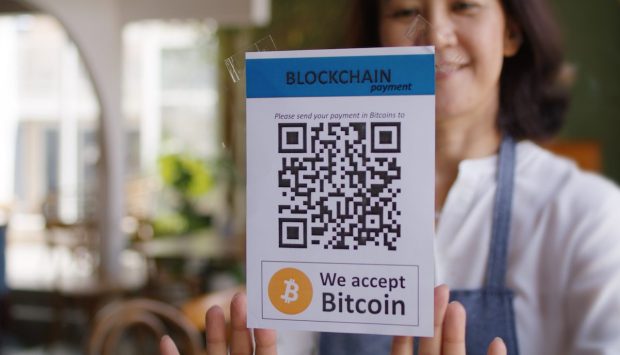QR Codes’ Growing Popularity Extends to Crypto Payments

Utah Jazz fans who want to buy non-fungible tokens (NFTs) of their favorite players must go no further than their stadium seats.
As part of the NBA team’s move to embrace cryptocurrency and NFTs, every seat was imprinted with a QR code that goes to the NFT marketplace of the crypto exchange CoinZoom, where fans can buy the media-bearing tokens directly and for cash.
“The NBA team wanted to offer NFTs to reward their fan base, but they didn’t want them to have to go through this arduous process to do it,” Todd Crosland, founder and CEO of Salt Lake City-based CoinZoom, told PYMNTS.
Going through an exchange can be a hassle, starting with obtaining a digital wallet and running through having to buy ether tokens to pay for the NFTs — although that’s starting to get easier as marketplaces adopt card payments.
See also: How to Buy an NFT in 19 Easy Steps
More broadly, QR codes have been widely adopted in the crypto payments industry as the simplest way to allow crypto owners to spend their tokens directly at the point of sale (POS) without acquiring a Visa– or Mastercard-branded crypto debit card.
Around the World
The biggest user of QR codes in the crypto world is without a doubt China, where the government has been providing them to merchants across the country so they can accept payments in its new central bank digital currency (CBDC), the digital yuan or e-CNY.
It’s an important enough payments tool that the People’s Bank of China seems to be rolling out a single standardized QR code system, in which dominant payments apps AliPay and WeChat QR codes will be joined by the e-CNY as a payments option — something that will give it a boost against the private digital payments systems that account for more than 90% of China’s mobile payments, Bloomberg reported Sept. 14.
Major Latin American cryptocurrency exchange Bitso rolled out a QR code-based payments system for its 1 million customers in Argentina, where the tumbling economy and inflation rate nearing 80% are making crypto payments much more popular. The exchange’s app will generate a QR code that can be used to pay in either the local fiat currency or cryptocurrencies from customers’ accounts.
“This is an especially important product offering for Argentina, as it provides users protection from the adverse economic factors such as inflation and currency devaluation,” said Bitso Senior Vice President of Product Santiago Alvarado, according to Bitcoin.com. “In addition to increasing financial opportunities for users, Bitso is fulfilling its mission to make crypto useful.”
Growing Popularity
Among other things, QR codes are growing more and more popular with digital payments generally as they are simple to use and interoperable, whether from a bank, FinTech or crypto payments processor.
The Transfers 3.0 system that launched in Argentina last year connects to all digital wallets and can be accepted by any business, regardless of where the code originated. It has proven successful enough that Argentina has the third-highest volume of online purchases in Latin America, according to PYMNTS’ “Digitizing Payments in Latin America” playbook.
Read more: How Demand for Digital and Contactless Payments Is Growing Across Latin America
Mexico has also launched a new, interoperable mobile QR code payments system, and digital wallet adoption has taken off to the point where it is expected to outpace debit and credit cards by 2024, the playbook stated.
Further afield, the Central Bank of Bahrain has joined with local FinTech Eazy Financial Services’ EazyPay app and top crypto exchange Binance’s merchant payment service, Binance Pay, to launch a crypto payments service in the kingdom.
For all PYMNTS crypto coverage, subscribe to the daily Crypto Newsletter.
